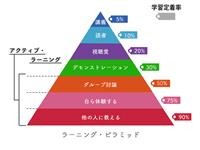IEEE/IEE Electronic Library(IEL)
全文数据库
? 提供美国电气电子工程师学会和英国电
气工程师学会出版的刊物( 1988年 --)
? 120多种期刊
? 600多种会议录
? 近 900种标准
Adobe Acrobat Reader软件
? 网上浏览、保存阅读全文电子期刊
( PDF格式)
? 4.x的版本
? http://cgim.adobe.com/acrobat/read
er14
检索环境
? 采用 IP地址限定用户范围,不需要帐号
和口令。
– 校园网的用户均可通过连接 INTERNET访问
美国 IEL主页
? 电话拨号连接校园网的用户,可以拨打
999联通 IEL
? 由于 IEL目前不提供镜像和专线访问的技
术方案
? 读者通过 INTERNET访问该库的国际流
量费用需用户自己负担。
使用说明
? 并发用户数限制在 15个
– 出现,All product licenses are in use,Please
try later.”的信息
? 检索完毕尽快退出,以便他人能够联通
检索方式
? Search
? Advanced Search
Advanced Search
? 支持字段检索和逻辑算符
? View Field Names——浏览字段符
? View Search Operators——浏览逻辑算符
? 限定在某一字段中检索,格式为:检索
词 <in>字段名
? 例如:检索 Smith J.的文章,
? 检索式为,Smith J.<in>au
著者检索途径说明
? 著者检索一般是姓在前,名在后;但对
于中国人来说可能不符。
? 如王国平 ——wang guoping
? 检索式为,guoping wang <in>au
? 保险的方法:按数据库的记录形式检索
运算顺序
? (inference mechanisms <And> Delgado M.)
<Or> Vila M.A,
IEL—常用的检索字段及标识符
? Abstract ab
? Article Title ti
? Author au
? Catalog Number ca
? Affiliation cs
? Conference Title ct
? Meeting Date cy
IEL—常用的检索字段及标识符
? Subject Term de
? ISSN,ISBN in
? Issue Number is
? Journal Name jn
? Title (Article) ti
? Volume vo
检索算符
? 逻辑算符,<and>, <or>
? 位置算符
? Accrue <accrue>
? Specific Field <in>
? Phrase <phrase>
位置算符 Sentence
? 在同一句子中查找
? <sentence>
? echo <sentence> ISDN
? <sentence> (analog,digital,convert)
位置算符
? Paragraph <paragraph>
? Near <near>
? Word <word>
? Stem <stem>
? Thesaurus <thesaurus>
例子
? "ceramic" <in> ti
? (fiber optic <and> network) <in> ti
? (ceramic,porcelain) <in> (ti,de)
? smith<in> au <and> wave <in> ti
? ceramic <in> de <and> 1 <in> isnew
? isnew-- 查找最近 30天的加入数据库的新
记录
位置算符 <order>
? 限定检索词出现的顺序
? <order> (echo <sentence> cancel)
? <order> (cold <sentence> fusion)
? <order> (cold <near/10> fusion)
? (<order> ("output" <near/3> "input")) <in>
ti
? Use <order> with a proximity operator to
match search terms only if they appear in
the specified order,(By default,proximity
operators (except <phrase>) match search
terms regardless of their order.) <order>
tends to narrow a search because it places
an additional condition on records,
Syntax
? <order> proximityexpression
? where proximityexpression is a search
expression based on a valid proximity
operator,
? Notes
? Proximity Operators
? With proximity operators you can find
search terms that appear within a particular
field or that appear near one another within
a record (increasing the chances that they
are related),
? Proximity operators include,
? phrase> Operator
? Use the <phrase> operator to search for
records in which two or more search terms
must appear within the same phrase (any
phrase within any field),
? Syntax
全文数据库
? 提供美国电气电子工程师学会和英国电
气工程师学会出版的刊物( 1988年 --)
? 120多种期刊
? 600多种会议录
? 近 900种标准
Adobe Acrobat Reader软件
? 网上浏览、保存阅读全文电子期刊
( PDF格式)
? 4.x的版本
? http://cgim.adobe.com/acrobat/read
er14
检索环境
? 采用 IP地址限定用户范围,不需要帐号
和口令。
– 校园网的用户均可通过连接 INTERNET访问
美国 IEL主页
? 电话拨号连接校园网的用户,可以拨打
999联通 IEL
? 由于 IEL目前不提供镜像和专线访问的技
术方案
? 读者通过 INTERNET访问该库的国际流
量费用需用户自己负担。
使用说明
? 并发用户数限制在 15个
– 出现,All product licenses are in use,Please
try later.”的信息
? 检索完毕尽快退出,以便他人能够联通
检索方式
? Search
? Advanced Search
Advanced Search
? 支持字段检索和逻辑算符
? View Field Names——浏览字段符
? View Search Operators——浏览逻辑算符
? 限定在某一字段中检索,格式为:检索
词 <in>字段名
? 例如:检索 Smith J.的文章,
? 检索式为,Smith J.<in>au
著者检索途径说明
? 著者检索一般是姓在前,名在后;但对
于中国人来说可能不符。
? 如王国平 ——wang guoping
? 检索式为,guoping wang <in>au
? 保险的方法:按数据库的记录形式检索
运算顺序
? (inference mechanisms <And> Delgado M.)
<Or> Vila M.A,
IEL—常用的检索字段及标识符
? Abstract ab
? Article Title ti
? Author au
? Catalog Number ca
? Affiliation cs
? Conference Title ct
? Meeting Date cy
IEL—常用的检索字段及标识符
? Subject Term de
? ISSN,ISBN in
? Issue Number is
? Journal Name jn
? Title (Article) ti
? Volume vo
检索算符
? 逻辑算符,<and>, <or>
? 位置算符
? Accrue <accrue>
? Specific Field <in>
? Phrase <phrase>
位置算符 Sentence
? 在同一句子中查找
? <sentence>
? echo <sentence> ISDN
? <sentence> (analog,digital,convert)
位置算符
? Paragraph <paragraph>
? Near <near>
? Word <word>
? Stem <stem>
? Thesaurus <thesaurus>
例子
? "ceramic" <in> ti
? (fiber optic <and> network) <in> ti
? (ceramic,porcelain) <in> (ti,de)
? smith<in> au <and> wave <in> ti
? ceramic <in> de <and> 1 <in> isnew
? isnew-- 查找最近 30天的加入数据库的新
记录
位置算符 <order>
? 限定检索词出现的顺序
? <order> (echo <sentence> cancel)
? <order> (cold <sentence> fusion)
? <order> (cold <near/10> fusion)
? (<order> ("output" <near/3> "input")) <in>
ti
? Use <order> with a proximity operator to
match search terms only if they appear in
the specified order,(By default,proximity
operators (except <phrase>) match search
terms regardless of their order.) <order>
tends to narrow a search because it places
an additional condition on records,
Syntax
? <order> proximityexpression
? where proximityexpression is a search
expression based on a valid proximity
operator,
? Notes
? Proximity Operators
? With proximity operators you can find
search terms that appear within a particular
field or that appear near one another within
a record (increasing the chances that they
are related),
? Proximity operators include,
? phrase> Operator
? Use the <phrase> operator to search for
records in which two or more search terms
must appear within the same phrase (any
phrase within any field),
? Syntax



